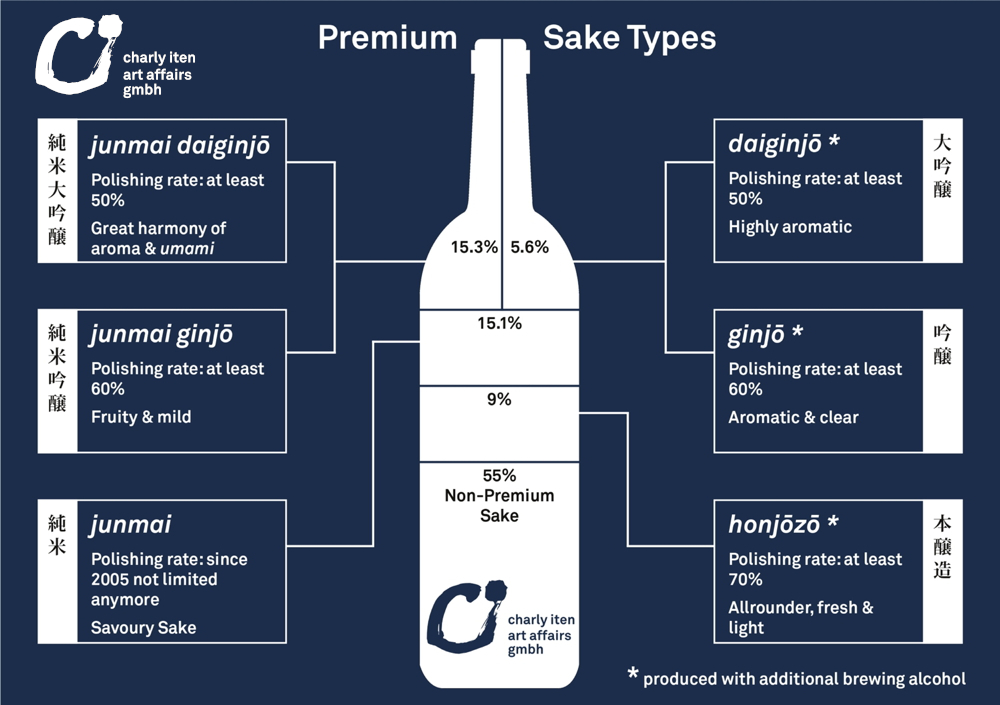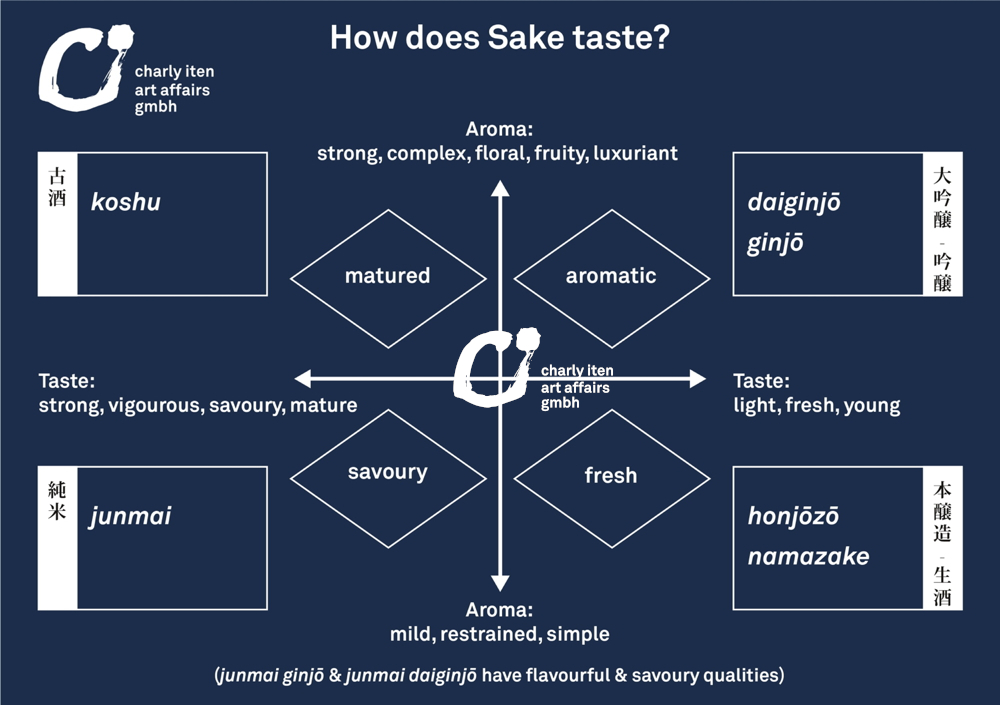The different Premium Sake Types

At the beginning the topic of sake might seem like a mystery to many. You get confronted with a multitude of unfamiliar Japanese terms that you’ve hardly ever heard of.
Especially when you go into the field of Premium Sakes, there’s a number of words related to the different types or categories that you won’t understand without any explanations.
Ultimately, however, this matter is not hard to deal with because basically there are only two main groups in Premium Sakes. Those that always contain the word junmai and those that consistently do not have it.
Junmai literally means “pure rice”. Sake provided with the term junmai refers to a product that, in a way similar to the “German’s Beer Purity Law”, is only made from the following ingredients: steamed rice, kōji (a part of steamed rice that is cultivated with the mould Aspergillus Oryzae), yeast, lactic acid and water.
Junmai sakes are generally characterised by a fuller body and a more pronounced acidity.
In contrast, all those Sakes that do not contain the word junmai stand out due to the small addition of high-percentage brewing alcohol during the last stage of the main mash. In combination with the rice and the yeast this means that even more aromas can be extracted in favour of a more complex aroma structure, while the dilution of the mash caused by the brewing alcohol leads to lighter bodies in the finished product.
A further subdivision of these two main groups is based on the rice polishing rate that is indicated in percentages on each sake bottle, making it clear how much of the original rice grain size is still left. Premium Sake rice is polished because the outer layers of the rice grain contain proteins and lipids in concentrations that, if not removed, would produce undesirable off-flavours. In addition, higher degrees of polishing allow to make significantly more aromatic, expressive sakes.
The entry level is set at a minimum polishing rate of 70% for so-called honjōzō. This requirement was also applied to junmai until 2005, but since then the producers are free to do as they like.
The next level is a minimum polishing rate of 60%. Junmai sakes that meet this requirement are called junmai ginjō. Sakes with brewing alcohol on the other hand are only called ginjō.
Finally, the third and highest level has a minimum polishing rate of 50%. Junmai sakes that meet this requirement are called junmai daiginjō. Sakes with brewing alcohol are simply called daiginjō.
Sake and its aroma & taste profiles

Free pdf file of the above Sake graphics including Sake Newsletter. Click here for making an: Order
Further Sake know-how related to specific fields can be found at the MySake Wiki of the Sake Sommelier Association (SSA) for which I contributed a considerable amount of the articles:
> History and Culture Timeline
> Economy
> Legal Names and Designations
> Workers
> Water
> Rice
> Tasting